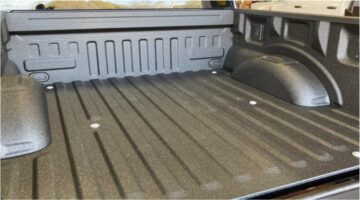The thing about winter is that it’s a time of year where things can go wrong. For instance, home heating systems can break down. And cars can start misbehaving too! There’s nothing worse than trying to start your car on a cold winter’s morning and finding that nothing happens!
It can be a real pain when that happens, especially if you need to use your car to get to work. The other downside to winter car breakdowns is that you usually have to spend a lot of money to put things right. That’s why it’s important that you make sure your car is ready for those cold winter months.
In today’s blog post, I will share with you some brilliant tips to keep your car running in tip-top condition for winter. Check them out:
Give your car a full service
The first thing you need to do is make sure that your car is mechanically sound. And the obvious way to do that is to give it a full service. These essential checks and tasks should get carried out as part of your car’s service:
- Vital fluids. Get your engine oil, coolant, brake fluid and transmission fluid replaced as part of the service. It doesn’t matter whether it “needs” to get done or not. Get these vital fluids changed anyway before winter;
- Filters. As part of the oil change, the oil filter must get replaced at the same time. One filter that people seldom replace is the pollen or cabin filter. This filter helps to prevent your cabin from fogging up on cold, rainy days. It also filters the air coming into the cabin and is good news for people with respiratory problems like asthma;
- Windshield wiper blades. Opinion differs on when you should replace your wiper blades. I always recommend to car owners that they replace them twice a year. Especially before the colder winter months of the year where rain and snow is more frequent;
- Windshield washer fluid. You can buy special fluids that don’t freeze at certain temperatures. These fluids are useful for people that live in parts of the world where harsh winters are commonplace.
As part of your car’s service, you should have your local auto shop check for damage or wear to anything made from rubber. Examples include drive belts and hoses. Any damaged items should get replaced at the same time as the colder weather can make damaged rubber worse.
The last thing you need is to have a car breakdown because of a split coolant hose, for example!
Fit winter tires
Now that everything under the hood is OK, it’s time to focus your attention on the car’s exterior. The first check you should make is whether you have the right tires or not. It’s possible to buy all-season tires for your car. But I suggest fitting some special winter tires during the colder months of the year.
The thing about winter tires is that they have different tread patterns that help to provide extra grip. Especially on wet, icy, and snowy conditions. Summer tires are quite useless in adverse driving conditions.
And regardless of your tire type, if your tires have little tread on them you can guarantee that your car will slide all over the road. That’s not something I would want you to experience as the results can sometimes be fatal.
If you’re not sure which winter tires to buy for your car, read some online reviews from motoring magazines. These publications often test the limits of new tires, so that you know whether you’re buying a decent set of tires or not. Don’t assume that all premium brands offer excellent quality tires for winter!
Consider buying a new car
Are you rolling around in an old clunker? If so, I would recommend that you think about buying a new car. If you’ve not bought a new car in a while, you might believe that a brand new vehicle will cost you a fortune to buy.
But look at websites like www.gkgroup.co.uk, for example. You will see that car dealers are falling over themselves to offer significant discounts and affordable payment plans for new vehicles! Often, it makes financial sense to buy a new car instead of paying lots of money each month to keep your old clunker on the road.
All cars have a limited lifespan. Some people might say “they don’t make cars like they used to.” The truth is; today’s cars are better built and more reliable than the cars of yesteryear!
Don’t just take my word for it. Calculate your maintenance and repair costs for the last 12 months on your old car. If they are higher than the cost of paying for a brand new vehicle, you know it’s time to move on and upgrade!
Don’t drive unless it’s safe to do so
When the weather around you is getting bad, be sure to watch or listen to your local weather reports on the TV or radio respectively. If the weather presenters advise you to stay indoors, it usually means the weather will take a turn for the worst.
Thanks to the wonders of modern technology, it’s possible for many employees to work from home using a computer and the Internet. If your job is office-based, you can just do your job at home and prevent yourself from having a car catastrophe.
I know I’d rather be at home instead of stuck in my car in the middle of a severe snow drift!
Keep an emergency kit in your car
If you’ve no choice but to venture out in bad weather, make sure you keep an “emergency kit” in your car.
Examples of what your kit should have include foldable snow shovels, LED flashlights, jump leads, and water and snacks. Some folks even have first aid kits and spare cell phone batteries just in case.
You never know what situation you might find yourself in during the cold winter months. That’s why it’s better to be prepared for most situations. Regardless of how unlikely they might be to you.










